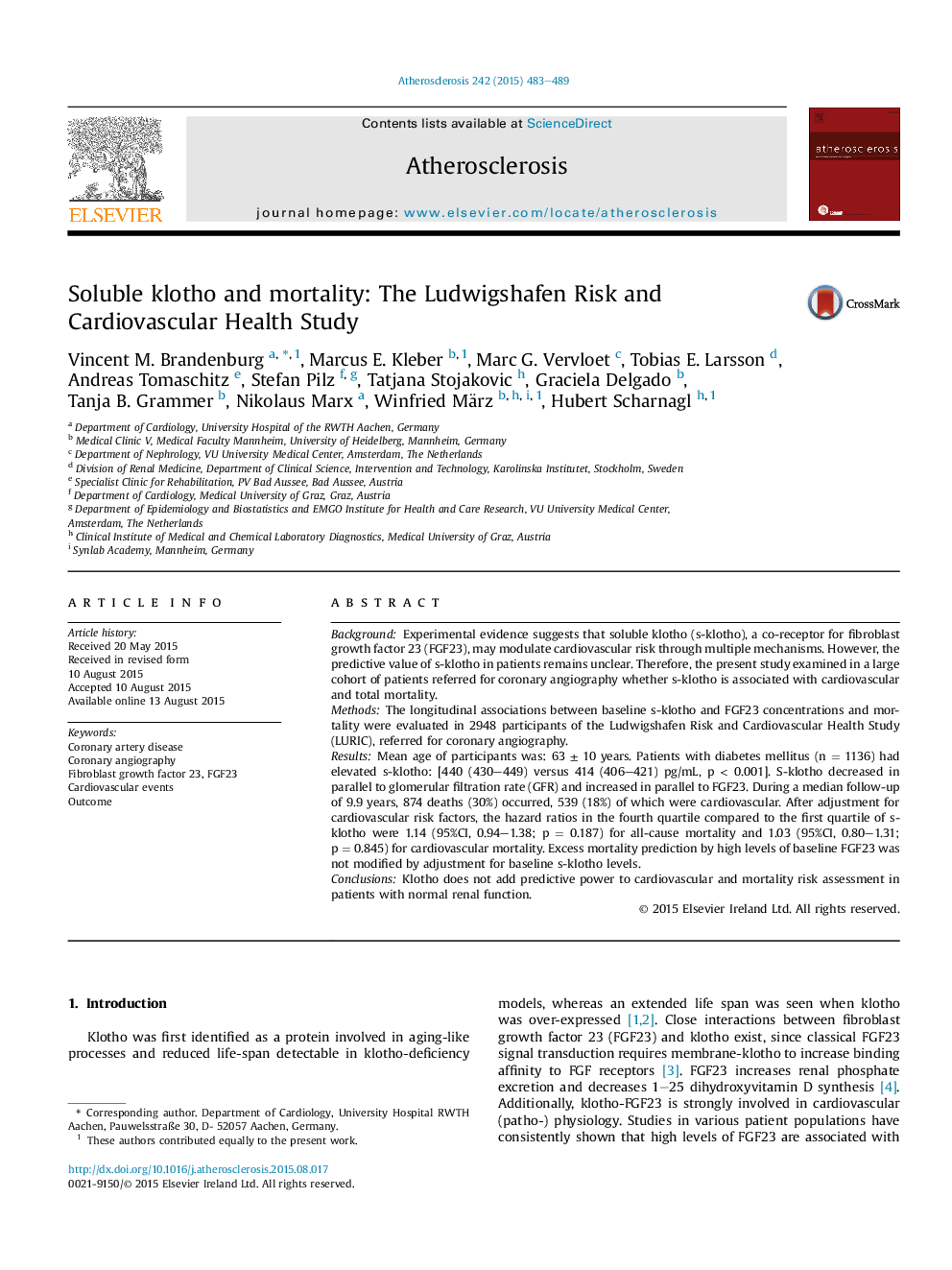| Article ID | Journal | Published Year | Pages | File Type |
|---|---|---|---|---|
| 5943858 | Atherosclerosis | 2015 | 7 Pages |
â¢We evaluate the role of soluble klotho as mortality risk factor in patients with coronary angiography.â¢Soluble klotho levels do predict mortality risk over 9.9 years of follow-up.â¢Soluble klotho adds little to future risk prediction, which clarifies an important aspect within the klotho-FGF23-axis.
BackgroundExperimental evidence suggests that soluble klotho (s-klotho), a co-receptor for fibroblast growth factor 23 (FGF23), may modulate cardiovascular risk through multiple mechanisms. However, the predictive value of s-klotho in patients remains unclear. Therefore, the present study examined in a large cohort of patients referred for coronary angiography whether s-klotho is associated with cardiovascular and total mortality.MethodsThe longitudinal associations between baseline s-klotho and FGF23 concentrations and mortality were evaluated in 2948 participants of the Ludwigshafen Risk and Cardiovascular Health Study (LURIC), referred for coronary angiography.ResultsMean age of participants was: 63 ± 10 years. Patients with diabetes mellitus (n = 1136) had elevated s-klotho: [440 (430-449) versus 414 (406-421) pg/mL, p < 0.001]. S-klotho decreased in parallel to glomerular filtration rate (GFR) and increased in parallel to FGF23. During a median follow-up of 9.9 years, 874 deaths (30%) occurred, 539 (18%) of which were cardiovascular. After adjustment for cardiovascular risk factors, the hazard ratios in the fourth quartile compared to the first quartile of s-klotho were 1.14 (95%CI, 0.94-1.38; p = 0.187) for all-cause mortality and 1.03 (95%CI, 0.80-1.31; p = 0.845) for cardiovascular mortality. Excess mortality prediction by high levels of baseline FGF23 was not modified by adjustment for baseline s-klotho levels.ConclusionsKlotho does not add predictive power to cardiovascular and mortality risk assessment in patients with normal renal function.
